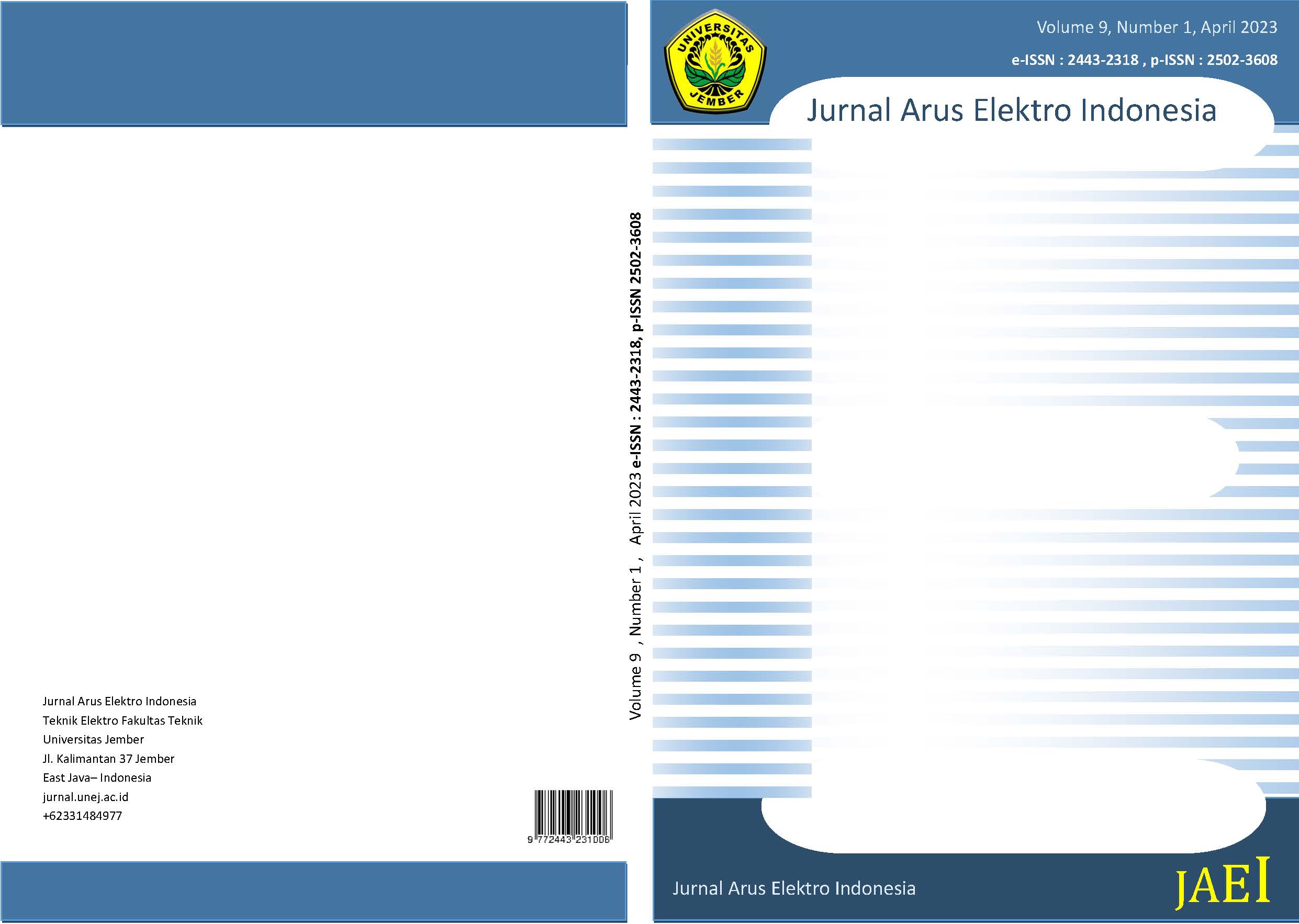Thermostat Automation for Controlled Temperature in Simulated Incubator
DOI:
https://doi.org/10.19184/jaei.v9i1.34354Keywords:
Bayi Prematur, Inkubator Bayi, Suhu TubuhAbstract
Morbiditas dan mortalitas neonatus biasanya disebabkan oleh prematuritas neonatus atau BBLR (berat badan lahir rendah). Selanjutnya, neonatus prematur akan diberi obat pada inkubator. Perangkat inkubator harus membuat lingkungan yang cocok untuk bayi seperti tingkat suhu yang stabil, konsentrasi oksigen, dan kelembaban. Tingkat suhu harus dipantau sekitar 36°-38°C pada perangkat inkubator neonatus. Termostat dapat digunakan untuk mendapatkan suhu batas atas & bawah yang telah ditentukan inkubator. Selain itu, inkubator yang disimulasikan memiliki kunci relai yang berfungsi untuk mencegah perangkat rusak karena aliran listrik yang tidak stabil dari sumber listrik. Inkubator simulasi ini secara khusus dapat digunakan dalam sistem inkubator pada perangkat inkubator.
Downloads
References
[2] D. Pandya, J. Parmar, and A. Patel, “PIC Microcontroller based baby incubator using sensors,†Int. Res. J. Eng. Technol., vol. 4, no. 3, pp. 1906–1910, 2017, [Online]. Available: https://irjet.net/archives/V4/i3/IRJET-V4I3515.pdf.
[3] A. H. Muosa, “Wireless Controland Monitoring Systemfor Premature Infant IncubatorEnvironment ﻰﺳﻮﻣ ﻦﺴﺣ ï»²ï» ï»‹,†J. Coll. Educ. pure Sci., vol. 7, no. 4, pp. 28–39, 2017, [Online]. Available: https://irjet.net/archives/V4/i3/IRJET-V4I3515.pdf.
[4] P. Ele, J. B. Mbede, and E. Ondoua, “Parameters Modelling and Fuzzy Control System of Neonatal Incubators,†Setit, pp. 6–11, 2009.
[5] L. Lamidi, A. Kholiq, and M. Ali, “A Low Cost Baby Incubator Design Equipped with Vital Sign Parameters,†Indones. J. Electron. Electromed. Eng. Med. informatics, vol. 3, no. 2, pp. 53–58, 2021, doi: 10.35882/ijeeemi.v3i2.3.
[6] A. W. Kale, A. H. Raghuvanshi, P. S. Narule, P. S. Gawatre, and S. B. Surwade, “Arduino Based Baby Incubator Using GSM Technology,†Int. Res. J. Eng. Technol., vol. 5, no. 4, pp. 462–465, 2018.
[7] V. Hall, E. Geise, and N. H. Kashou, “The IncuLight: Solar-powered infant incubator,†Proc. 4th IEEE Glob. Humanit. Technol. Conf. GHTC 2014, no. 1, pp. 223–226, 2014, doi: 10.1109/GHTC.2014.6970285.
[8] H. B. D. L. Mathew and A. Gupta, “Controlling of Temperatue and Humidity for an Infant Incubator Using Microcontroller,†Int. J. Adv. Res. Electr. Electron. Instrum. Eng., vol. 4, no. 6, pp. 4975–4982, 2015.
[9] T. K. Ferris and M. M. Shepley, “The design of neonatal incubators: A systems-oriented, human-centered approach,†J. Perinatol., vol. 33, no. SUPPL. 1, pp. S24–S31, 2013, doi: 10.1038/jp.2013.11.
[10] T. A. Tisa, Z. A. Nisha, and M. A. Kiber, “Design of an Enhanced Temperature Control System for Neonatal Incubator,†Bangladesh J. Med. Phys., vol. 5, no. 1, pp. 53–61, 2013, doi: 10.3329/bjmp.v5i1.14668.
[11] B. S. K. K. Ibrahim et al., “Fuzzy-based temperature and humidity control for HVAC of electric vehicle,†Procedia Eng., vol. 41, no. Iris, pp. 904–910, 2012, doi: 10.1016/j.proeng.2012.07.261.
[12] X. Li, J. Qu, Q. Wang, H. Zhao, and D. Chen, “Numerical and experimental study of the short-time withstand current capability for air circuit breaker,†IEEE Trans. Power Deliv., vol. 28, no. 4, pp. 2610–2615, 2013, doi: 10.1109/TPWRD.2013.2265328.
[13] H. H. Goh., “A review on equipment protection and system protection relay in power system,†Int. J. Integr. Eng., vol. 9, no. 4, pp. 7–12, 2017.
[14] C. Wang, “A thermostat fuzzy control system based on MCU,†3rd Int. Symp. Intell. Inf. Technol. Appl. IITA 2009, vol. 1, pp. 462–463, 2009, doi: 10.1109/IITA.2009.324.
Downloads
Published
Issue
Section
License
Sebagai penulis yang sesuai naskah dan atau atas nama semua penulis, saya menjamin bahwa :
- Naskah yang diajukan adalah karya asli saya/kami sendiri.
- Naskah belum dipublikasikan dan tidak sedang diajukan atau dipertimbangkan untuk diterbitkan di tempat lain.
- Teks, ilustrasi, dan bahan lain yang termasuk dalam naskah tidak melanggar hak cipta yang ada atau hak-hak lainnya dari siapa pun.
- Sebagai penulis yang sesuai, saya juga menjamin bahwa "JAEI Editor Journal" tidak akan bertanggung jawab terhadap semua klaim hak cipta dari pihak ketiga atau tuntutan hukum yang dapat diajukan di masa depan, dan bahwa saya akan menjadi satu-satunya orang yang akan bertanggung jawab dalam kasus tersebut.
- Saya juga menjamin bahwa artikel tersebut tidak mengandung pernyataan memfitnah atau melanggar hukum.
- Saya/kami tidak menggunakan metode yang melanggar hukum atau materi selama penelitian.
- Saya/kami memperoleh semua izin hukum yang berkaitan dengan penelitian,
- Saya/kami berpegang pada prinsip-prinsip etika selama penelitian.
- Saya/kami bersedia apabila artikel kami dipublikasikan oleh tim redaksi JAEI



